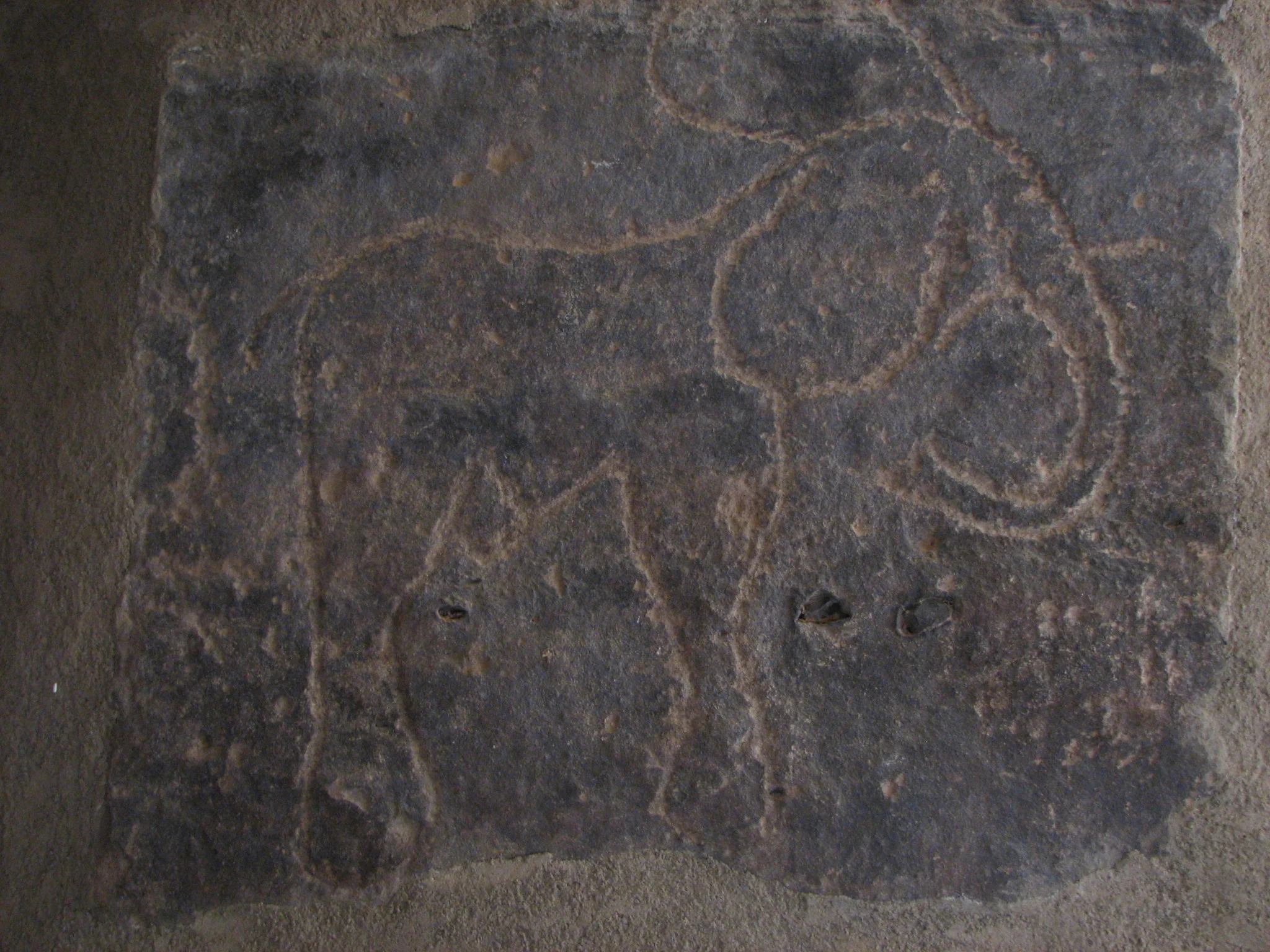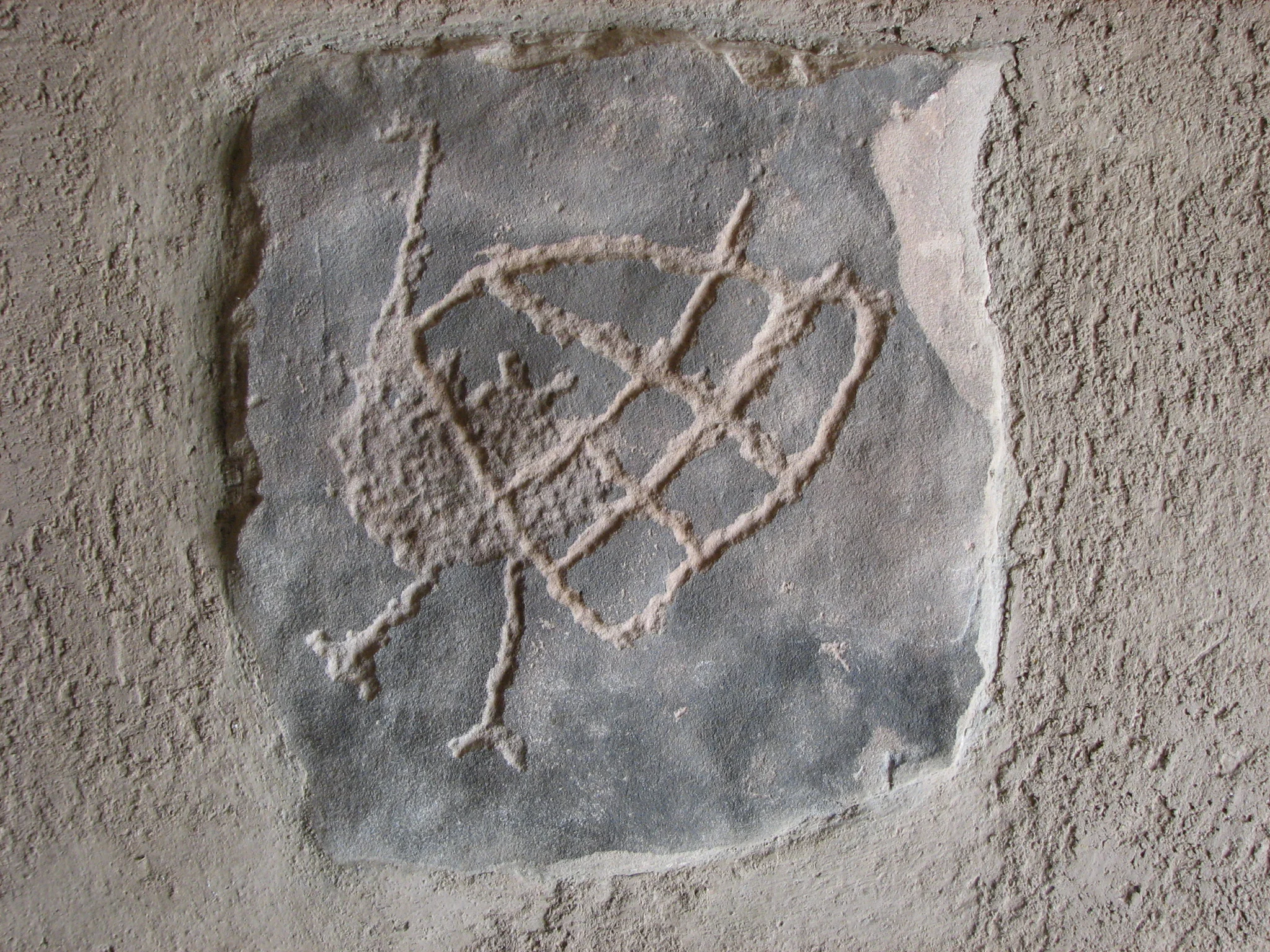Nubian Museum
Our first stop on this day was the Nubian Museum. This museum covers Nubian history, art, and culture from 4500 B.C. through today. Most items in the museum are from places that are now underwater from the Aswan dams which covered most of the Nubian living areas. It was one of my favorite museums that we visited. It wasn’t so full of things to see that I got overwhelmed, tired, and bored. It was arranged well with many fewer items to see. Almost every item had an explanation so we just walked around and read the pieces that we found interesting.
The first three pictures were ones that I took in an area on the outside of the museum proper. They took a bunch of “cave drawings” from the actual caves, cut out the whole pieces of rock with the cave drawings, and transplanted them here. In the back of the museum, they built a cave and inserted the ancient artifacts onto the walls, making them look very original. There were dozens of them on the walls in this replica cave. I could not, however, understand what most of the cave etchings were – based on the explanations that were given…SO, I only took pictures of the cave drawings that made sense to me and that I could figure out what they were before reading the explanation.
You can look at these next three photos and, like me, you should be able to figure out what the ancients were drawing.
Now we are inside the Nubian Museum. We were allowed to take pictures inside this museum as well, as long as we didn’t use a flash. I have included three photos for you that I found interesting, for one reason or another.
The first picture I included because it was so typical. It also interested me because it was so much like the Egyptian pharaoh statues. You can notice the wig and beard, which most pharaohs had in carvings and statues. This statue was about 12 feet tall and had a lot of detail to it. You can see the detail in fingers, toes, eyes, and so on. You can also see a bit of color here and there and I’m sure that originally, it was an extremely colorful statue.
This next photo I included because our guide made such a big deal over it. It is a statue of a woman and our guide went on and on about how it was practically only a set of boobs and nothing else – which she said pointed out how little women were thought of back then. I actually didn’t think that at all. As I looked at it, I thought what seemed odd was how big the head and feet were considering that it is such a small statue. You can decide for yourselves.
The last photo I included because it was a real interesting one to me. It has some obvious flaws such as the right hand is missing, but that’s pretty typical on these old statues. Many of them have seen floods and invaders galore and are thousands of years old, so some damage is to be expected. It also has two colors of granite: black and white, but we saw that in a few other statues as well. This is King Chephran, but you will notice that he does not have on the typical wig and beard, like on the first statue. But aside from these points, there is something hauntingly familiar, intriguing, and delightful about this statue – sort of a regal quality.






